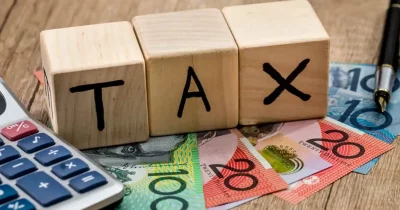The Australian Taxation Office (ATO) reveals a concerning statistic: workers are owed an estimated $3.6 billion in superannuation guarantee (SG). Despite an impressive 94% compliance rate in SG payments without regulatory intervention in the fiscal year 2020-21, a 5.1% net gap persists, contributing to the staggering $3.6 billion deficit. This gap encompasses various factors, including $1.8 billion from concealed wages, such as off-the-books cash payments and misclassified contractors. Furthermore, $1.1 billion of SG charge debt faces insolvency as of February 2022, leaving it unlikely to be recovered.
To tackle this issue, the ATO is leveraging technology, specifically the Single Touch Payroll (STP) system, harmonized with super fund data. This technological integration allows the ATO to pinpoint late payments and incorrect reporting swiftly. The rise in late payment of quarterly SG contributions is a growing concern, often attributed to cash flow difficulties or technical glitches. The ATO emphasizes the necessity for SG contributions to reach the employee’s fund before the due date, highlighting the importance of timely payments.
Employers failing to meet the quarterly SG contribution deadline are subjected to the Superannuation Guarantee Charge (SGC). This charge comprises the SG amount owed, 10% interest per annum, and an administration fee. Unlike normal SG contributions, SGC amounts are non-deductible. Employers should make late SG payments to promptly lodge a superannuation guarantee statement to avoid accumulating additional interest and potential penalties.
There are risks associated with misclassifying workers, that even genuine contractors may still be subject to PAYG withholding, SG, payroll tax, and workers’ compensation obligations. The penalties for employers who misclassify workers can be substantial, underlining the necessity for accurate classification to avoid legal repercussions.
In response to these challenges, the government is planning to implement laws mandating that employers pay SG concurrently with employee salary and wages, starting from July 1, 2026. This proposed reform aims to increase the frequency of SG contributions, benefiting employees and mitigating the accumulation of SG liabilities when employers miss deadlines. Two timing options for SG payments are under consideration: on the day salary and wages are paid or a ‘due date’ model.
The consultation paper on payday super proposes updating the SGC with interest accruing from ‘payday.’ Currently, the majority of employers make SG payments quarterly. These reforms are contingent on the passage of legislation and are slated to take effect in 2026. The employers, for the time being, there is no immediate action required concerning payday super.
In light of the significant SG gap and the various challenges contributing to it, the ATO’s use of technology, coupled with future legislative reforms, aims to address these issues head-on. Employers are urged to stay informed about the evolving landscape of SG regulations and to proactively ensure compliance, not only to avoid penalties but also to contribute to the financial well-being of Australian workers. The payday super initiative, if implemented, promises to be a pivotal step towards achieving more timely and consistent superannuation contributions, fostering a more secure retirement for the nation’s workforce.
Should you please have any question in regards to above, please feel free to contact our friendly team in Pitt Martin Tax at 0292213345 or info@pittmartingroup.com.au.
The material and contents provided in this publication are informative in nature only. It is not intended to be advice and you should not act specifically on the basis of this information alone. If expert assistance is required, professional advice should be obtained.
By Yvonne Shao @ Pitt Martin Tax

Experienced Tax Accountant and Business Advisor with a demonstrated history of working in the accounting industry. Skilled in Tax, Accounting, Business Advisory and SMSF. Strong entrepreneurship professional with qualification Master of Professional Accounting, CPA Public Practice, Registered Tax Agent, Registered ASIC Agent, NSW Law Society External Examiner, Trust Account Auditor and Diploma of Finanical Planning. Specialised in SME, tax planning and international tax, he helped client save ample money and create wealth.










